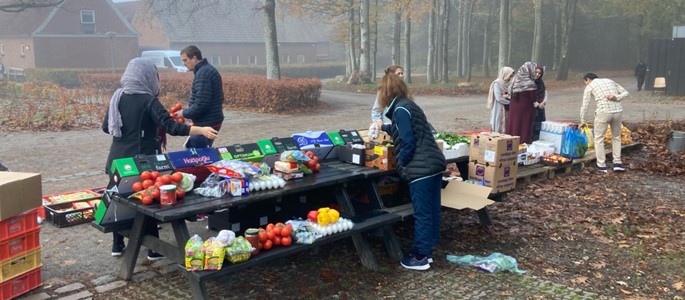One year later: How did the evacuated Afghans fare?
Almost one year after their arrival, we take stock and also look at how Afghans were received in other countries
Evacuees in numbers (May 2022):
1,077 Afghans were evacuated to Denmark.
908 of them applied for residence under the special law, including children. The rest of them already had legal stay in Denmark.
828 were granted permission
54 were rejected
19 are undecided (having either left the country or withdrawn their application)
7 were still pending as of May.
472 of them have also applied for asylum, and these cases have not yet been decided.
In June 2022, 180 evacuees have left for the United States, where they obtained entry visas via the embassy. At least 20 others had already traveled to the UK and the US last year.
Profile of the evacuated Afghans, according to the Red Cross:
• Just over half are children.
• Most of the adults are women (around 60%).
• Approx. 25% of adults are illiterate (predominantly women).
• Slightly more than half speak English (primarily men).
• Practically all men have been employed before fleeing, along with 43% of women.
• Approx. 25% of the group has a higher education.
• There are both Pasthu and Dari speakers in the group.
In addition to the two main groups who have worked as military interpreters or been employed at the Danish embassy, evacuees have held positions such as: responsible for the canteen in the large Camp Bastion, state prosecutor, journalist, consultant to the UN mission in Afghanistan, employee of a Danish crisis relief organization, head of security. Several have been advocates for women's rights or have made active efforts against corruption and for democracy.
In August 2021, under chaotic circumstances when the Taliban had just taken power, more than a thousand Afghans from Kabul were evacuated and accommodated in Denmark. This happened on the basis of a hasty political agreement made between the Danish government and a number of parties, later reshaped into a special law. The intention was to secure those Afghans who had worked at the Danish embassy and for the Danish armed forces, along with a smaller number of employees in international organizations who were also included.
Some of the evacuees had previously been refused under the so-called interpreter agreement from 2013, which only let a small handful of the approx. 200 interpreters pass through the eye of its needle and receive protection. Refugees Welcome has been fighting for and with the Afghan interpreters since 2012, and has had continuous contact with many of the evacuees in the past year.

The road between Kunduz and Kabul.
The Special Law
One of the main arguments for making a special law was that there should be faster case processing than via the regular asylum system, because of a particular responsibility for this group due to their employments and connections to Danish operations, which was now putting them in danger. But it ended up that both the passing of the law and the individual case processing took a very long time: the vast majority of evacuees ended up waiting for 8-9 months in asylum centres. It is thought-provoking that shortly afterwards, it proved possible both to implement a special law and case processing in approx. 3 weeks for the first 800 Ukrainians.
Even though these Afghans were evacuated exactly to protect them from abuse and persecution by the Taliban, the special law does not contain any wording about the risk that the evacuees are facing. The criteria are exclusively about employment and connections to the Danish state or international organizations such as the UN and the EU, and members of the employees' household. Therefore, some have been refused because they have not been employed themselves and although related to an employee, did not live with that person.
Fortunately, the vast majority managed to get all their family members with them during the evacuation, and since the special law uses the definition "household", some have had their elderly parents and their siblings approved. This is not normally possible for a refugee, since the narrowest definition of family is used, meaning spouse and children under 18. However, several had to leave behind vulnerable family members, especially younger sisters, and they get no help now from the rigid, Danish system: they are faced with lengthy case processing, which will probably end in rejection. If the Danish Immigration Service considers it unlikely that they will be granted permission, they must even pay a fee of DKK 10,000 to have the application processed. A random and unreasonable difference between the families, which the law has not taken into account, although Refugees Welcome, among others, warned about it in the consultation to the law proposal.
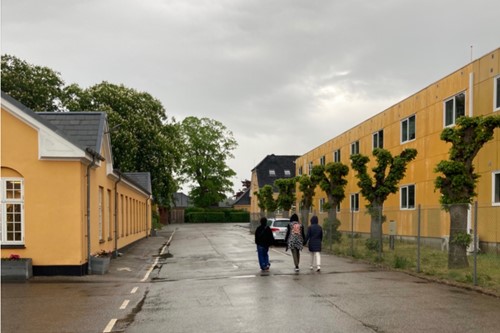
Afghans in reception center Sandholm, 2021.
It was only possible to apply under the special law for a very brief period, and then all options closed down. Refugees Welcome has received many inquiries from desperate Afghans who now have to live in hiding even from their own families, or who have come to Pakistan or Iran, where they have no rights and can be sent back at any time. This is the case, for instance, for many women who studied in the USA and fought openly for women's rights, and for military interpreters who never received any response from the Danish authorities.
The main problem with the special law, however, is that it only allows for two years of residence – with no possibility of extension! Normally, a refugee's stay is extended if the risk situation persists. Even the Ukrainian special law includes the possibility of a politically agreed extension. No one imagines that the Taliban will have disappeared by February-April 2024, when the majority of the Afghans' residency permits expire. The answer from the political side is: they can then just apply for asylum. But asylum processing is an assessment of risk, and thus of completely different criteria than the special law deals with. There is absolutely no guarantee that they will get asylum, and in addition they have to go through double case processing – completely incoherent with the desire to get this group through the system quickly and smoothly, as first proclaimed. They have ended up being worse off than other refugees, even though Denmark shares responsibility for the risk situation in which they find themselves.
The chance of being granted asylum
Denmark has a tradition of assessing Afghan asylum cases very restrictively compared to the rest of the EU. In 2021, until the Taliban took power, only 3% of applicants were granted asylum (6% in the first four months, see below). The year before, it was 15%. In comparison, more than 50% of all Afghans received asylum in the rest of the EU, and this major difference can be seen as far back as 2014. During the first four months of 2022, 73% of Afghans have been granted asylum in the EU on average. Furthermore, most refusals in Denmark to Afghans are given due to lack of credibility, making it practically impossible to complain about the decisions to the UN or the European Court of Human Rights. Since you can rarely prove a conflict or a threat from the Taliban, everything depends on the applicant's own story, and the Danish asylum system is designed to make the applicant appear untrustworthy.
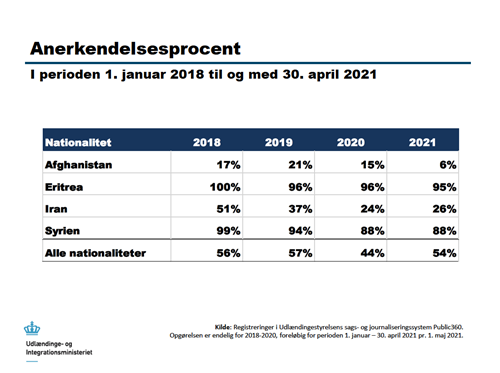
Afghan asylum cases have been put on hold from August 2021 to February 2022. A number of rejected cases, most of which arrived back in 2016, have been reopened in the Refugee Appeals Board due to the changed situation in Afghanistan. Out of the 26 cases that have so far been decided, 13 (i.e. half) were overturned and granted asylum. Some because you could no longer refer them to "internal flight alternative", i.e. to take up residence in Kabul, others because they as women without a male family network would be very vulnerable. But a number of risk factors are still rejected as insufficient on their own to get asylum, for instance to have been "westernized" after many years in Europe, to have visible tattoos, or to belong to the Hazara ethnic minority. An individual motive for asylum is still required, which typically means a conflict or an individual threat from the Taliban. Furthermore, it can trigger asylum if you have converted to Christianity, and the authorities consider this to be a genuine and real conversion.

Letter of appreciation to interpreter from the Danish army at Camp Tombstone, 2010
So far, it has not been sufficient to be profiled as a likely target for the Taliban, for example almost all the interpreters who have worked for the Danish forces have been refused asylum under the so-called interpreter agreement. And when it comes to the evacuees, it is not certain that they have received a concrete threat – on the contrary, they are at a very high risk simply because of the work they have done as public prosecutors, employees at a Western embassy, women's rights activists – and interpreters. Based on this, it is difficult to say how many of them will be granted asylum. Next comes the question of how their family members beyond the nuclear family will be positioned when the special law expires.
There are currently approx. 50 rejected Afghans in the Danish asylum centres. After the Taliban took power, Denmark no longer has a repatriation agreement, and forced deportations therefore cannot practically take place. Last year, a total of 11 Afghans were deported, with and without coercion.
The flight from Denmark
At least 200 of the evacuees have left Denmark after realizing that they have no guarantees of being allowed to stay beyond the two years that the special law permits them. With the prospect of yet another long case processing in the asylum case, risk of refusal, uncertainty about family members' access as well as many years of waiting and uncertainty about permanent residence and possible citizenship, those who had the opportunity chose to give up Denmark and start over in Great Britain and the USA, where many also had connections. In contrast to Denmark, they get permanent residence right away, and the prospect of citizenship is realistic. The language is of course another advantage, as many already speak English.
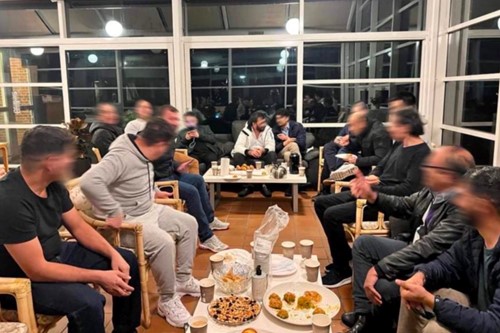
Evacuated Afghans at asylum centre Holstebro, autumn 2021.
The United States has understood that this group of Afghans is a great resource and attractive new citizens. Over the years, the Americans have brought many thousands of their former interpreters, drivers, cooks, etc., from Afghanistan to the United States via the so-called SIV applications. In 2021, the American embassy put up notices in the Danish asylum centers where the evacuees lived, inviting them to apply and relocate to the US. During June 2022, approx. 200 of them (including family) were accommodated at Hotel Østerport for a few weeks and summoned for interviews and health checks by the US embassy. 180 evacuees were approved and put on a chartered flight directly from Kastrup to the US, and were allowed to choose which state they wanted to live in.
Several of them assured Refugees Welcome that they were deeply grateful for the friendly reception they had received from the Danish local communities, but that the uncertain future that came with the special law weighed too heavy on them. Neither new Danish friends, nice kindergartens or free health services could outweigh the stress of only being secured and safe for two years.
Denmark treats Afghans worse than other Western countries
In a study from the University of York, "Divided in Leaving Together: The resettlement of Afghan locally employed staff", the two professors Sara de Jong and Dimos Sarantidis have compared the reception of Afghans in Denmark, Canada, Australia, Germany, France, the Netherlands, UK and the United States – all countries were part of the military coalition. The researchers have categorized the countries' assistance to the Afghans into "shortcomings" and "best practice” respectively, divided into three phases: before the Taliban take over in August 2021; during the evacuation itself; and establishing in the host country. Out of the 13 parameters on which the countries are measured, Denmark is in the "shortcomings" column in 10 and only in “best practice” in two, one could not be answered.
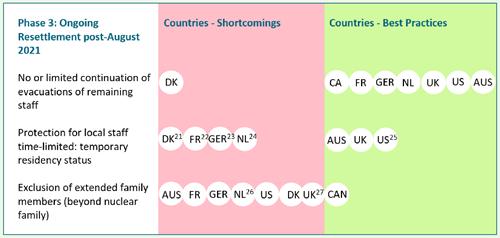
Sweden is not included in the study. The country evacuated around 1,500 particularly vulnerable Afghans, and they were handled as part of Sweden's quota/resettlement refugees for 2021, and all received permanent residence permits. Even before their arrival, the families were distributed among Sweden's municipalities, which had the accommodation ready. Denmark could also have used the same model, but didn’t.
Danish newspaper Politiken published a comparison of different countries' reception, based on random Afghan evacuees' own responses. In France, someone had been granted 10 years of residence immediately, and in Ireland only two weeks were spent in asylum centres. But in the UK most were still lodged in hotels and struggling to get by, and in Germany thousands have had to live for long periods in asylum centers. In all of these countries, however, evacuees got a residence permit for at least three years, and the prospect of permanent residence soon after. And since the future is the most important thing for a refugee, it places Afghan evacuees under the Danish special law worse than in all these other countries. Denmark's new practice of withdrawing the residence permit for refugees, even after many years of legal residence, is also exceptional.
New network for Afghans in Denmark
Together with the Danish United Nations Association and DAKDIF (diaspora association for Afghan women), Refugees Welcome has taken the initiative to establish a network which will bring together three groups with Afghan roots in Denmark: 1) Danish-Afghans who were born and/or raised here, 2) the evacuees, and 3) those who have had their asylum case rejected and live in the asylum centres. For the time being, a memorandum has been drawn up about the concept, and you can write to tahmina.salik(at)gmail.com if you want to get on the mailing list and get an invitation to the next meeting. The aim of the network is partly to build a social network, partly to put pressure on the Danish Parliament to have the special law renegotiated and extended.
PHOTOS: Michala Clante Bendixen. The main picture is from Holstebro asylum centre, where a local Arabic shop came and sold groceries to the Afghans every week.
Our efforts for the Afghans
and this article would not be possible
if not for our members!


